AG Steve Marshall: Private individuals can’t bring Section 2 Voting Rights Act claims

Alander Rocha, Alabama Reflector The Alabama Attorney General’s office argued in a motion filed last week in a Louisiana congressional redistricting case that private individuals cannot bring actions under a key provision of the Voting Rights Act. In a motion signed on by 12 Republican-led states, including Alaska, Georgia, Idaho, Indiana, Iowa, Kansas, Mississippi, Montana, Nebraska, South Carolina, Texas, and West Virginia, Alabama Attorney General Steve Marshall argued to the 5th Circuit Court of Appeals that Section 2 of the Voting Rights Act does not give private individuals the right to sue, or uphold an individual’s right to obtain monetary damages for claims of intentional discrimination. “There is no Section 2 liability unless ‘it is shown that’ members of a protected class ‘have less opportunity’ not just ‘to elect representatives of their choice’ but also ‘to participate in the political process,’” the motion argued. The argument rests on a recent 8th Circuit Court of Appeals opinion by Judge David Stras, appointed by former President Donald Trump, which argued that Congress only gave attorney generals the right to claim damages under the Section 2 of the Voting Rights Act. The attorney general’s office did not return a request for comment Monday. The argument, if upheld by the federal courts, would severely limit future challenges under Section 2, which bans voting and election practices that discriminate by race. NAACP Legal Defense Fund Deuel Ross, the organization representing plaintiffs who challenged both Louisiana and Alabama’s maps, said in a phone interview that Louisiana’s case won’t impact the Allen v. Milligan case decision in Alabama, the challenge that led to the court-ordered redrawing of Alabama’s congressional map, as Alabama is in the 11th Circuit Court of Appeals. Ross said the argument Marshall raised does not have merit, and that it should be rejected. “We’ll see what happens in the 5th Circuit, but the court has already rejected that argument; there’s Supreme Court precedent rejecting that argument,” Ross said. “And in the Alabama case, specifically, because it’s not in the 5th Circuit, anything that happens in the 5th Circuit won’t directly impact the Alabama case.” The case, Robinson v. Ardoin, is similar to Allen v. Milligan. Plaintiffs in the Louisiana case are challenging a map with just one majority-Black district lawmaker, adopted despite a federal district court order. Louisiana’s Black population exceeds 30%, which the court said merits a second Black district out of six total. Marshall’s argument cites a 1971 Supreme Court case, Whitcomb v. Chavis, that states “that [B]lacks enjoyed full access to the political process, and thus held that the ‘failure of the ghetto to have legislative seats in proportion to its population emerges more as a function of losing elections than of built-in bias …’” The 1971 case, the motion argued, “explained that ‘[participation] in the political processes’ meant those activities most common to voters: being ‘allowed [1] to register or vote, [2] to choose the political party they desired to support, [3] to participate in its affairs[,] … [4] to be equally represented on those occasions when legislative candidates were chosen,’ and [5] not be ‘regularly excluded from the slates of both major parties.’” The United States Supreme Court in September denied Alabama’s request to stay a lower court decision directing a special master to draw new state congressional maps to remedy Voting Rights Act violations, opening the door to Alabama having two congressional districts with majority or near-majority Black populations. A three-judge panel in 2022 ruled that Alabama’s 2021 congressional map violated the Voting Rights Act by packing Black voters into a single congressional district. The panel, citing the racial polarization of voting in Alabama — where white Alabamians tend to support Republicans and Black Alabamians tend to support Democrats — ordered the state to draw a second-majority Black district or “something quite close to it.” After the U.S. Supreme Court upheld the lower court ruling last June, the Alabama Legislature in July approved a new map that created a 7th Congressional District in western Alabama and Birmingham with a BVAP of 50.65%, and a 2nd Congressional District in southeastern Alabama with a BVAP of less than 40%. Plaintiffs said that map did not address the court’s orders, and the three-judge panel agreed earlier this month. U.S. Circuit Judge Stanley Marcus and U.S. district judges Anna Manasco and Terry Moorer ordered special master Richard Allen to draw new maps, accusing legislators of ignoring their initial ruling. The state appealed to the Supreme Court, arguing the ruling would lead to “racial stereotyping” and violated their own redistricting principles. Alabama’s attorneys also made efforts to sway Justice Brett Kavanaugh, who joined most but not all of the court’s decision in June upholding the lower court ruling. The Alabama attorney general’s office frequently cited Kavanaugh’s opinion in a case banning affirmative action in college admissions, suggesting that plaintiffs and the lower court wanted to use “affirmative action” in the redistricting process. Marshall’s office ended the brief by concluding that Black Americans have the same voting rights as their white counterparts, and that vote dilution can only occur when people are prevented from participating in the political process. “The district court’s contrary rule is circular with no offramp,” the motion stated. “’[D]emands for outcomes’ will persist even decades ‘follow[ing] the cutting away of obstacles to full participation.’” Plaintiffs in the Louisiana case had not responded to Marshall’s brief as of early Monday evening. Alabama Reflector is part of States Newsroom, a network of news bureaus supported by grants and a coalition of donors as a 501c(3) public charity. Alabama Reflector maintains editorial independence. Follow Alabama Reflector on Facebook and Twitter.
Alabama Republicans reject call for 2nd majority Black district, despite Supreme Court ruling

Alabama Republicans, under orders of the U.S. Supreme Court to redraw congressional districts to give minority voters a greater voice in elections, rejected calls Monday to craft a second majority-Black district and proposed a map that could test what is required by the judge’s directive. Lawmakers must adopt a new map by Friday after the high court in June affirmed a three-judge panel’s ruling that Alabama’s existing congressional map — with a single Black district out of seven statewide — likely violated the Voting Rights Act. In a state where more than one in four residents is Black, the lower court panel had ruled in 2022 that Alabama should have another majority-Black congressional district or something “close to it” so Black voters have the opportunity to “elect a representative of their choice.” Republicans, who have been resistant to creating a certain Democratic district, proposed a map that would increase the percentage of Black voters in the 2nd congressional district from about 30% to nearly 42.5%, wagering that will satisfy the court’s directive. House Speaker Pro Tempore Chris Pringle, who serves as co-chairman of the state redistricting committee, said the proposal complies with the order to provide a district in which Black voters have the “opportunity to elect the representative of their choice.” “The goal here, for me, was to provide an opportunity for African-Americans to be elected to Congress in the second congressional district,” Pringle said. However, the National Redistricting Foundation, one of the groups that backed challenges to the Alabama map, called the proposal “shameful” and said it would be challenged. “It is clear that Alabama Republicans are not serious about doing their job and passing a compliant map, even in light of a landmark Supreme Court decision,” said Marina Jenkins, executive director of the National Redistricting Foundation. She called that a pattern seen throughout the state’s history “where a predominately white and Republican legislature has never done the right thing on its own, but rather has had to be forced to do so by a court.” The Permanent Legislative Committee on Reapportionment approved the proposal in a 14-6 vote that fell along party lines. The proposal was introduced as legislation Monday afternoon as lawmakers convened a special session to adopt a new map by a Friday deadline set by the three-judge panel. House Speaker Nathaniel Ledbetter said he believes the new district will be a swing district that could elect either a Democratic candidate or a Republican. “I think that the models will show that it could go either way, probably. I think all the court’s asked for was a fair chance. I certainly think that map does it. I don’t think there’s any question about that,” Ledbetter said. Democrats accused Republicans of rushing the process and thwarting the court’s directive. Sen. Vivian Davis Figures, a Democrat from Mobile, said the court was clear that the state should create a second majority-Black district or something close to it. “Forty-two percent is not close to 50. In my opinion, 48, 49 is close to 50,” Figures said. She had urged colleagues to adopt a proposal by the plaintiffs in the Supreme Court case that would make the 2nd district 50% Black. Rep. Chris England, a Democrat from Tuscaloosa, said he also doesn’t think the GOP proposal would satisfy the court’s directive. He said Republican lawmakers pushed through their proposal without a public hearing or producing a voter analysis of how the district will perform. Pringle said that information will be available Tuesday. “The map that we adopted, nobody had any input on. There was no public input on it, not subject to a public hearing, and now it’s going to be the map of choice,” England said. Deuel Ross, a lawyer with the NAACP Legal Defense and Educational Fund who argued the case before the Supreme Court, said lawmakers have yet to provide the information “necessary to evaluate whether these plans will, in fact, provide Black voters with opportunities to elect their candidates of choice in two districts.” “Any plan with a low Black voting age population does not appear to comply with the Court’s instruction,” Ross wrote in an email. Partisan politics underlies the looming redistricting fight. A higher percentage of Black voters increases the chances that the seat will switch from GOP to Democratic control. Pollster Zac McCrary said predicting a district’s partisan leanings depends on a number of metrics, but “getting a district too far below the mid-40s in terms of Black voter composition could certainly open the door for Republicans.” Republished with the permission of The Associated Press
Black representation in Alabama tested before Supreme Court
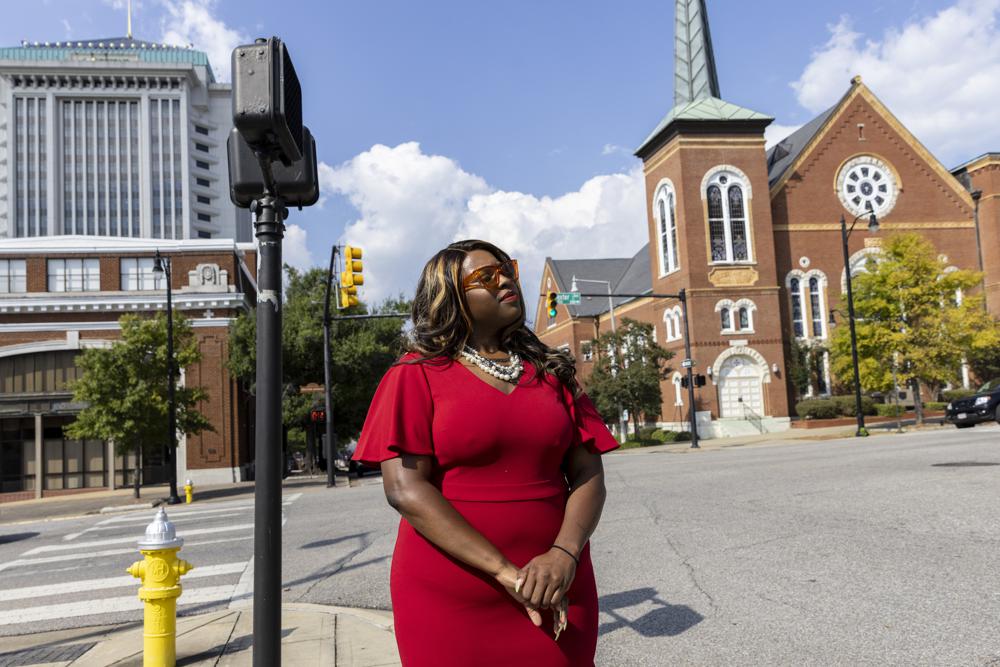
The invisible line dividing two of Alabama’s congressional districts slices through Montgomery, near iconic sites from the civil rights movement as well as ones more personal to Evan Milligan. There’s the house where his grandfather loaded people into his station wagon and drove them to their jobs during the Montgomery Bus Boycott as Black residents spurned city buses to protest segregation. It’s the same home where his mother lived as a child, just yards from a whites-only park and zoo she was not allowed to enter. The spot downtown where Rosa Parks was arrested, igniting the boycott, sits on one side of the dividing line, while the church pastored by the Rev. Martin Luther King Jr., who led the protests, sits on the other. The lines are at the center of a high-stakes redistricting case bearing Milligan’s name that will go before the U.S. Supreme Court on Tuesday, setting up a new test of the Voting Rights Act and the role of race in drawing congressional boundaries. At the center of the case is a challenge by various groups arguing that the state violated the federal Voting Rights Act by diluting the political power of Black voters when it failed to create a second district in which they make up a majority, or close to it. African Americans account for about 27% of the state’s population but are the majority in just one of the state’s seven congressional districts. “Our congressional map is not reflective of the population that lives in Alabama,” said Milligan, 41, one of several voters who joined interest groups in filing the lawsuit. The case the Supreme Court will take up Tuesday centers on whether congressional districts in Alabama were drawn to reduce the political influence of Black voters, but it’s also part of a much broader problem that undermines representative government in the U.S. Both major political parties have practiced gerrymandering — drawing congressional and state legislative boundaries to cement their hold on power — but Republicans have been in control of the process in far more states since after the 2010 elections. That has allowed them to win an outsized share of statehouse and U.S. House seats and means GOP policies — including on abortion restrictions — often don’t reflect the will of most voters. An Associated Press analysis from 2017 showed that Alabama had one of the most gerrymandered congressional maps in the country. Republicans dominate elected office in Alabama and are in charge of redistricting. They have been resistant to creating a second district with a Democratic-leaning Black majority that could send another Democrat to Congress. A three-judge panel that included two appointees of President Donald Trump ruled unanimously in January that the Alabama Legislature likely violated the Voting Rights Act with the map. “Black voters have less opportunity than other Alabamians to elect candidates of their choice to Congress,” the panel said. The judges ordered state lawmakers to draw new lines for this year’s election and create a second district where Black voters either made up a majority or near majority of the population. But on a 5-4 vote in February, the Supreme Court sided with Alabama to allow this year’s congressional elections to take place without adding a second predominantly Black district. Two justices suggested it was too close to spring primaries to make a change. The lawsuit claims the Alabama congressional map dilutes the voting strength of Black residents by packing a large number of them into a single district — the 7th, where 55% of voters are Black — while fragmenting other communities. That includes the state’s Black Belt region and the city of Montgomery. The current districts leave the vast majority of Black voters with no realistic chance to elect their preferred congressional candidates anywhere outside the 7th district, the lawsuit contends. “This is just about getting Black voters, finally, in Alabama, the opportunity to elect their candidates of choice. It’s not necessarily guaranteeing that they will have their candidate elected,” said Deuel Ross, senior counsel at the NAACP Legal Defense and Educational Fund, which is representing the plaintiffs. The groups contend that the state’s Black population is large enough and geographically compact enough to create a second district. Milligan, who is six generations removed from enslaved ancestors who lived in the Black Belt, ticked off the consequences for Black residents who are not able to have representation that aligns with their needs: addressing generational poverty, the lack of adequate internet service, Medicaid expansion and the desire for a broader array of health care services. “In choosing not to do that, you’re denying the people of the Black Belt the opportunity to elect an additional person that can really go to the mat on their interests,” said Ross, who is one of the attorneys who will argue the case in a challenge backed by the Biden administration. African Americans served in Alabama’s congressional delegation following the Civil War in the period known as Reconstruction. They did not return until 1993, a year after the courts ordered the state to reconfigure the 7th Congressional District into a majority-Black one, which has since been held by a succession of Black Democrats. That 1992 map remains the basis for the one in use today. “Under numerous court challenges, the courts have approved this basic plan. All we did is adjust it for population deviation,” said state Rep. Chris Pringle, a Republican and chairman of the legislative committee that drew the new lines. Alabama argued in court filings that the state’s Black population is too spread out to be able to create a second majority district without abandoning core redistricting principles such as keeping districts compact and keeping communities of interest together. Drawing such a district, the state argued, would require mapping acrobatics, such as connecting coastal areas in southwest Alabama to peanut farms in the east. In a statement to The Associated Press, Alabama Attorney General Steve Marshall said the map is “based on race-neutral redistricting principles that were approved by a bipartisan group of legislators.” He said it looks similar to
Supreme Court sides with GOP in Alabama election map case
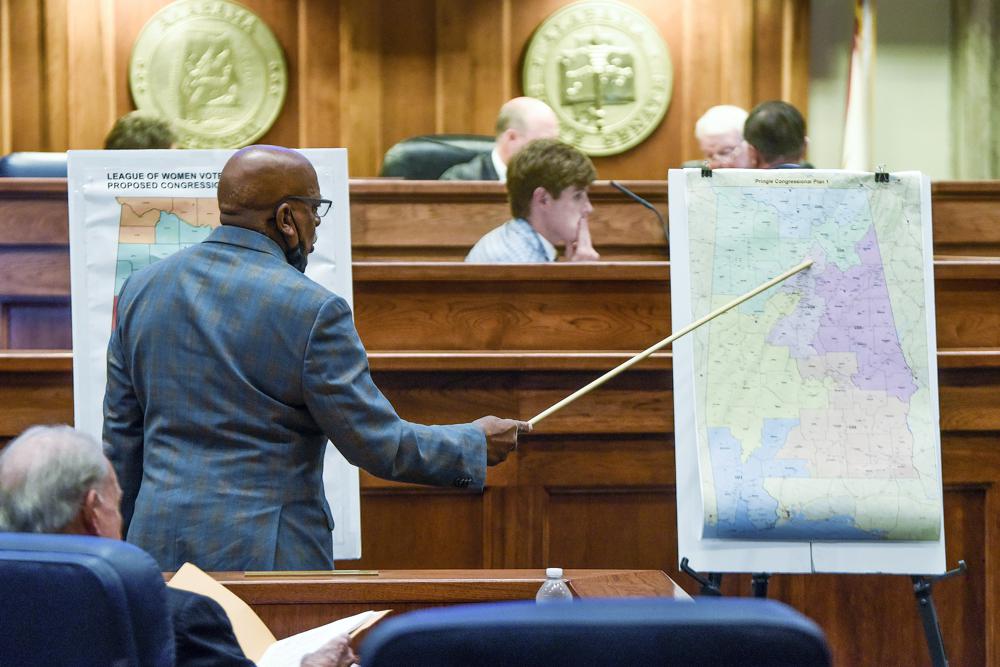
The Supreme Court on Monday put on hold a lower court ruling that Alabama must draw new congressional districts before the 2022 elections to increase Black voting power. The high court order boosts Republican chances to hold six of the state’s seven seats in the House of Representatives. The court’s action, by a 5-4 vote, means the upcoming elections will be conducted under a map drawn by Alabama’s Republican-controlled legislature that contains one majority-Black district, represented by a Black Democrat, in a state in which more than a quarter of the population is Black. A three-judge lower court, including two judges appointed by former President Donald Trump, had ruled that the state had likely violated the federal Voting Rights Act by diluting the political power of Black voters by not creating a second district in which they made up a majority, or close to it. Justices Brett Kavanaugh and Samuel Alito, part of the conservative majority, said the lower court acted too close to the 2022 election cycle. Chief Justice John Roberts joined his three more liberal colleagues in dissent. The justices will, at some later date, decide whether the map produced by the state violates the landmark voting rights law, a case that could call into question “decades of this Court’s precedent about Section 2 of the VRA,” Justice Elena Kagan wrote in dissent. That decision presumably will govern elections in 2024 through the end of the decade in Alabama and could affect minority political representation elsewhere in the country, too. Alabama lawmakers redrew the state’s congressional districts following the results of the 2020 census. Several groups of voters sued, arguing that the new maps diluted the voting power of Black residents. In a unanimous ruling in late January, the three judges said that the groups were likely to succeed in showing that the state had violated the Voting Rights Act. As a result, the panel ordered lawmakers to redraw the districts so Black voters would be a majority, or close to it, in two districts, not one. The ruling ran more than 200 pages. The panel wrote that “we do not regard the question … as a close one.” Alabama asked the Supreme Court to put the ruling on hold while it appeals, and the justices agreed. The state argued that it drew the new map guided by race-neutral principles and that the new map is similar to past maps. More than a dozen mostly Republican-led states had filed a brief urging the justices to side with Alabama and allow it to use the maps it originally drew. Deuel Ross, a lawyer for Alabamians who sued, called the state’s congressional districts “a textbook case of a Voting Rights Act violation” and said the high court’s decision to intervene is disheartening. But the facts are clear, Ross, a lawyer with the NAACP Legal Defense and Educational Fund, wrote in an email to The Associated Press. “Alabama’s current congressional map violates the Voting Rights Act,” he said. “The litigation will continue, and we are confident that Black Alabamians will eventually have the congressional map they deserve — one that fairly represents all voters.” Roberts, who typically votes against consideration of race, wrote that he shares some of Alabama’s concerns but still would have let the redrawn districts govern the 2022 election and have future elections governed by the ultimate outcome in the case. Kavanaugh, writing to explain his vote, stressed that the court has repeatedly declined in the past to change the rules close to an election. “When an election is close at hand, the rules of the road must be clear and settled. Late judicial tinkering with election laws can lead to disruption and to unanticipated and unfair consequences for candidates, political parties, and voters, among others. It is one thing for a State on its own to toy with its election laws close to a State’s elections. But it is quite another thing for a federal court to swoop in and re-do a State’s election laws in the period close to an election,” he wrote in an opinion Alito joined. Taking issue with Kavanaugh, Kagan noted that the lower court ruled months before any votes will be cast. She criticized the conservatives for using the emergency application process known as the shadow docket “to signal or make changes in the law, without anything approaching full briefing and argument.” Republished with the permission of the Associated Press.
Justices weigh Alabama’s bid to stop redistricting order

The U.S. Supreme Court is weighing Alabama’s request to freeze a court order requiring the state to draw new congressional lines and create a second district with a significant number of Black voters. Alabama has asked the court to halt an injunction issued by a three-judge panel blocking the use of the current map after the panel found it likely violates the Voting Rights Act. The Alabama attorney general argued the ruling will throw 2022 elections into chaos and require the state to put race above other redistricting criteria. But lawyers for people and organizations that brought the initial lawsuit dispute that and argue the current lines — similar to those in use since the 1990s — do not reflect a state that has grown more racially diverse. “This is very much a textbook case of a Voting Rights Act violation,” said NAACP Legal Defense Fund senior counsel Deuel Ross, whose organization represented the plaintiffs in the case. The three-judge panel last month found Alabama’s map, drawn by the GOP-dominated Alabama Legislature, likely violates the Voting Rights Act because, “Black voters have less opportunity than other Alabamians to elect candidates of their choice to Congress.” The decision cited Section 2 of the Voting Rights Act which prohibits racial discrimination in election procedures. Alabama’s congressional delegation has for years consisted of one Black representative elected from a heavily Black district and six white representatives elected from heavily white districts. The judges added that any “remedial plan will need to include two districts in which Black voters either comprise a voting-age majority or something quite close to it.” U.S. Census numbers show the state has grown racially more diverse since 1990. Black people make up about 27% of the state’s population while white people make up 63% of the population. “We think that Alabama has an obligation to draw fair maps that are reflective of the state’s very rich history of diversity, not just racial diversity, but diversity in terms of representation for everyone,” Ross said. The Alabama attorney general argues the ruling will improperly require states to prioritize race over other redistricting criteria. “The court-ordered redraw marks a radical change from decades of Alabama’s congressional plans. It will result in a map that can be drawn only by placing race first above race-neutral districting criteria, sorting and splitting voters across the State on the basis of race alone,” Alabama Attorney General Steve Marshall wrote in the state’s appeal to the U.S. Supreme Court. Fourteen conservative-led states signed on to a brief in support of Alabama, arguing that the ruling and “absence of clarity no doubt means litigation will ensue across the country over new maps.” Louisiana Attorney General Jeff Landry filed a brief along with attorneys general from Arizona, Arkansas, Georgia, Indiana, Kentucky, Mississippi, Missouri, Montana, Oklahoma, South Carolina, Texas, Utah, and West Virginia. Lawyers for plaintiffs argued Alabama is misrepresenting the ruling as prioritizing race instead of assessing whether an additional majority-Black district could be created consistent with compactness and traditional districting principles. It is unclear when the court will rule but Alabama faces a looming deadline to get new maps in place unless justices intervene. The three-judge panel pushed back the congressional candidate qualification deadline with political parties from Friday until February 11 to allow the Legislature the opportunity to enact a remedial plan. Alabama lawmakers appear to be waiting on the U.S. Supreme Court’s decision. The legislative reapportionment committee has not met since the ruling of the three-judge panel, some members said. “The attorney general has filed motions of stay and of appeal with the Supreme Court and we’re just going to need to see what the outcomes are, Senate President Pro Tem Greg Reed said. The three judges that issued the unanimous ruling consisted of one judge appointed by former President Bill Clinton — Senior U.S. Circuit Judge Stanley Marcus — and two judges appointed by former President Donald Trump — U.S. District Judge Anna Manasco and U.S. District Judge Terry Moorer. Evan Milligan, a Montgomery resident and the lead plaintiff in the lawsuit, said Alabama likely would have lost a congressional seat if not for the population growth of minority groups, including people born in other countries. “To produce maps that undercount the voting strength of the very population that’s contributing to the ability of the state to even have seven congressional districts is even more indefensible to me,” Milligan said. Republished with the permission of the Associated Press.
Lawsuits challenge new legislative, congressional lines
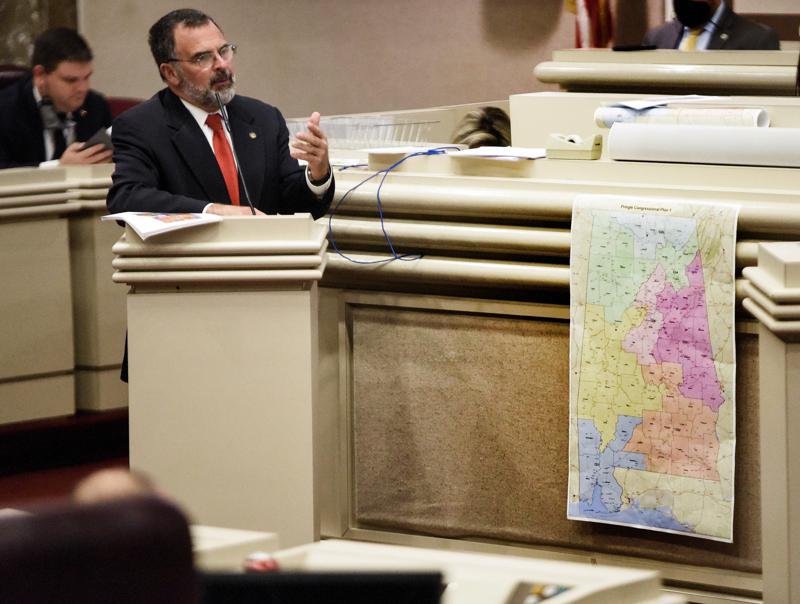
A pair of lawsuits announced Monday are challenging Alabama’s new congressional and legislative districts as racially gerrymandered to diminish the voting power of Black and minority voters. The lawsuits argue the new districts unlawfully pack Black voters into a small number of districts — limiting their ability to influence elections outside those districts — and break up minority communities elsewhere in the state. The cases were brought on behalf of Greater Birmingham Ministries, Alabama State Conference of the NAACP, and several individuals who are being represented by advocacy groups. “What Alabama is attempting to do here is not only wrong and undemocratic. It’s also a clear extension of a sadly consistent pattern in Alabama history in which lawmakers and powerbrokers use cynical measures in an attempt to marginalize Black and brown communities,” Deuel Ross, Senior Counsel, NAACP Legal Defense and Educational Fund, Inc., said in a news release. The lawsuits are asking federal judges to block the maps from being used in the 2022 elections. Alabama lawmakers approved new congressional, legislative, and school board districts earlier this month. Republican legislative leaders have expressed confidence the maps will survive a court challenge. The lawsuits announced Monday join at least two others challenging the newly drawn congressional districts. Republican Rep. Chris Pringle, the co-chair of the legislative redistricting committee, said Monday evening that he had just heard of the lawsuits and could not comment. The new districts are expected to maintain the lopsided Republican majority in the Alabama Legislature and the congressional delegation. The seven-member congressional delegation consists of six Republicans elected from heavily white districts and one Democrat elected from the only majority-Black district. About 26% of Alabama’s population is Black, and some lawmakers argued the state should have a second congressional district with a significant African-American population. During the recent special session, Republicans voted down Democratic efforts to create one swing congressional district centered in Birmingham that would be competitive between Republicans and Democrats. “The State of Alabama carries a sordid record of using racial discrimination to maintain the political power of its white citizens. While Alabama’s elected officials have made important changes over the past fifty years — mostly as a result of court orders or U.S. Department of Justice intervention — Defendants continue to run afoul of the law when it comes to redistricting,” one of the new lawsuits stated. The GOP-controlled Legislature in 2017 had to redraw legislative maps under court order to fix racial gerrymandering in 12 districts. The ruling came after Black lawmakers filed a similar lawsuit challenging the maps as “stacking and packing” Black voters into designated districts to make neighboring districts whiter and more likely to elect conservative Republicans. Republished with the permission of the Associated Press.
Jefferson county voters may have ballots thrown out after court rules they must have witnesses sign their ballots
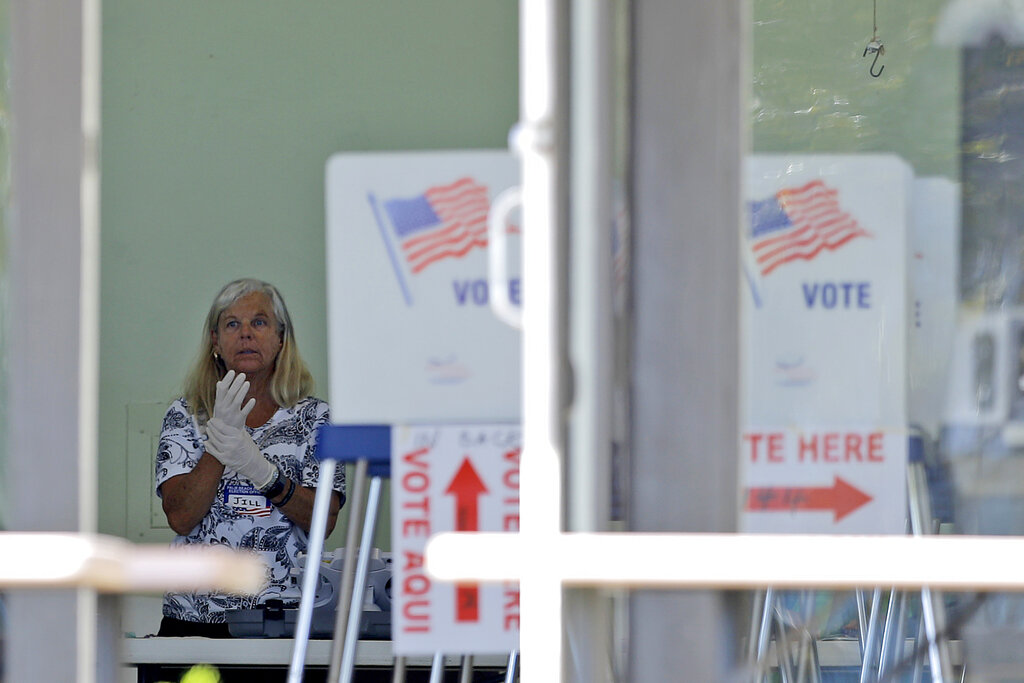
Thousands of Jefferson county voters may have their ballots thrown out after a flip flop decision on whether voters need witnesses to sign their mail-in ballots. According to a BuzzFeed article, elections officials sent out a waiver with absentee ballots allowing voters with some medical conditions to bypass a state law requiring them to have witnesses sign their ballots due to the coronavirus pandemic. However, on Oct. 13, the US Court of Appeals for the 11th Circuit reversed that order and reinstated the witness requirement. The original law states that all absentee votes must be signed by two witnesses or a notary, along with the voter signature as well. On Sept. 30, a federal judge blocked the witness requirement for voters with underlying medical conditions that put them at higher risk of COVID-19. Deuel Ross, an attorney for the NAACP Legal Defense and Education Fund, has been working on the issue and believes the county hasn’t done anything to remedy the situation. Voters have not been notified on how to fix their ballots so that they will count. Ross’s organization and others have sent letters to Jefferson county officials asking them to alert voters to the issue and come up with a way to “cure” ballots that don’t meet the proper requirements now. “We understand that your office has been managing a historic volume of absentee ballot applications and in-person absentee voters in recent weeks,” the letter states. “However, it is crucial that voters are given the opportunity to correct any issue with their ballot that resulted through no fault of their own.” With record-breaking numbers of people voting via absentee or mail-in ballots, this issue stands to affect many people. Ross stated he didn’t know how many people received the waiver form, but the numbers could be in the thousands. It is unknown if this issue is affecting other counties in Alabama. “Jefferson County was trying to do the right thing and inform voters,” Ross stated to Buzzfeed. “Unfortunately, the higher court stepped in and prevented voters from continuing to have that option after the two-week period there, so I think Jefferson County can and should do everything they can … and give voters a chance to cure their ballots.” Along with this last-minute change to voting rules, the U.S. Supreme Court voted 5–3 last week to allow Alabama to ban local election officials from offering curbside voting on Election Day to people with disabilities that put them at higher risk from the coronavirus. On Monday, the Absentee Elections Manager Jackie Anderson Smith released a press release regarding the issue. The announcement states that there is a plan in place for any voters that have a blue waiver with their ballot. Returned ballots with a waiver provided by the Jefferson County Absentee office that are postmarked on or before Oct. 13, 2020, will be counted. If a voter believes that they fall in this category or voted absentee by mail, utilizing a blue waiver, and their ballot was postmarked on or after Oct. 14, should call 205-325-5360.
Federal judge says Alabama can’t forbid curbside voting
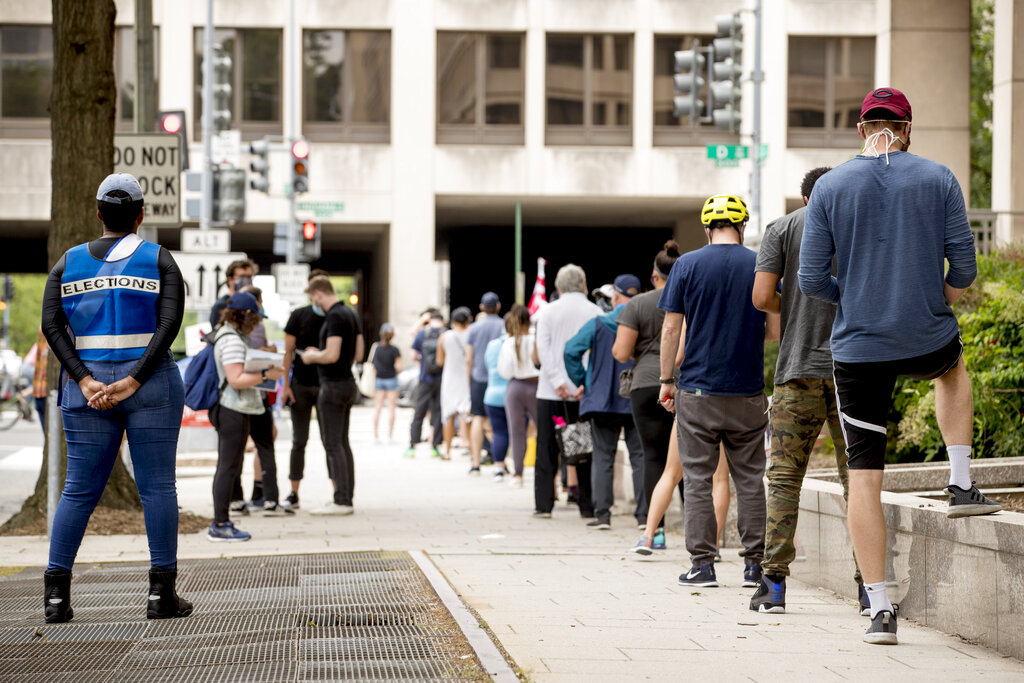
The judge waived other requirements, too.
Justice Department defends Alabama absentee ballot rule
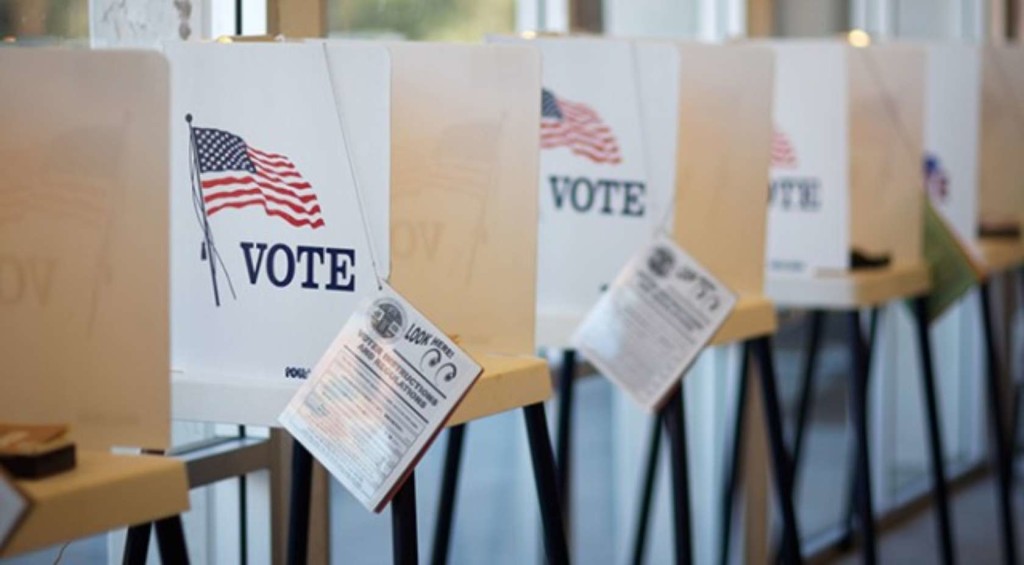
The Justice Department filed the statement of interest in a lawsuit that contends Alabama’s election procedures jeopardize the health of voters.


